10 Stunning Exotic Orchid Varieties Perfect for Indoor Growing
- Phalaenopsis (Moth Orchid) – Phalaenopsis orchids are perfect for beginners with their elegant, arching sprays of blooms that last for months. Available in countless colors from pure white to spotted purple, these adaptable plants thrive in average home conditions and indirect light. They’re particularly forgiving of inconsistent watering, making them ideal for busy plant parents.
- Paphiopedilum (Lady’s Slipper) – These architectural beauties feature distinctive pouch-shaped blooms that resemble elegant slippers. Paphiopedilums don’t require bright light, making them perfect for north-facing windows. Their exotic patterns and colors range from striped green and white to deep burgundy, with many varieties blooming for 6-8 weeks.
- Dendrobium Nobile – Known for producing masses of colorful flowers along their cane-like stems, Dendrobium Nobile orchids create a spectacular display when in bloom. These compact growers prefer cooler temperatures and a distinct rest period after flowering. Their fragrant blooms in white, purple, or bi-colors can appear twice yearly with proper care.
- Oncidium (Dancing Lady) – Oncidiums produce sprays of many small flowers that resemble dancing figures with their ruffled skirts. These vigorous growers display yellow, orange, or reddish-brown blooms that add movement and energy to your indoor garden. They prefer bright, indirect light and moderate humidity.
- Ludisia (Jewel Orchid) – Grown primarily for their stunning velvety foliage rather than flowers, Ludisia discolor features deep green leaves with striking red veining. These terrestrial orchids thrive in lower light conditions and add year-round interest to your collection. Their white flower spikes in winter are a bonus to their already impressive appearance.
- Cattleya – Often called the “corsage orchid,” Cattleyas produce large, ruffled blooms with intoxicating fragrances. These show-stopping flowers come in vibrant colors from lavender to yellow and orange. Though they require more light than other indoor orchids, a bright east or west window typically provides sufficient illumination for these tropical beauties.
- Miltoniopsis (Pansy Orchid) – With their flat, round flowers resembling pansies, Miltoniopsis orchids bring charm to any indoor space. Their large blooms often feature intricate waterfall patterns in the center and come in shades of pink, red, purple, yellow, and white. These orchids prefer cooler temperatures and consistent moisture.
- Vanda – Vanda orchids produce spectacular, colorful blooms on plants with architectural appeal. Their flowers appear in vivid blues, purples, and spotted patterns rarely found in other orchids. While traditionally challenging indoors, compact Vanda varieties have been developed specifically for windowsill growing with proper humidity and bright light.
- Zygopetalum – These distinctive orchids feature fragrant blooms with intricate patterns combining green, purple, and burgundy colors. Zygopetalums produce several flowers per stem that last 4-6 weeks and emit a sweet, jasmine-like scent. They prefer intermediate temperatures and moderate light, making them suitable for average home environments.
- Brassavola nodosa (Lady of the Night) – This enchanting orchid earned its name from its intensely fragrant white star-shaped flowers that release their perfume after sunset. Brassavola orchids are surprisingly easy to grow indoors with their tolerance for varying conditions. Their elegant blooms and evening fragrance make them a unique addition to any orchid collection.
Understanding the Basics of Indoor Orchid Care
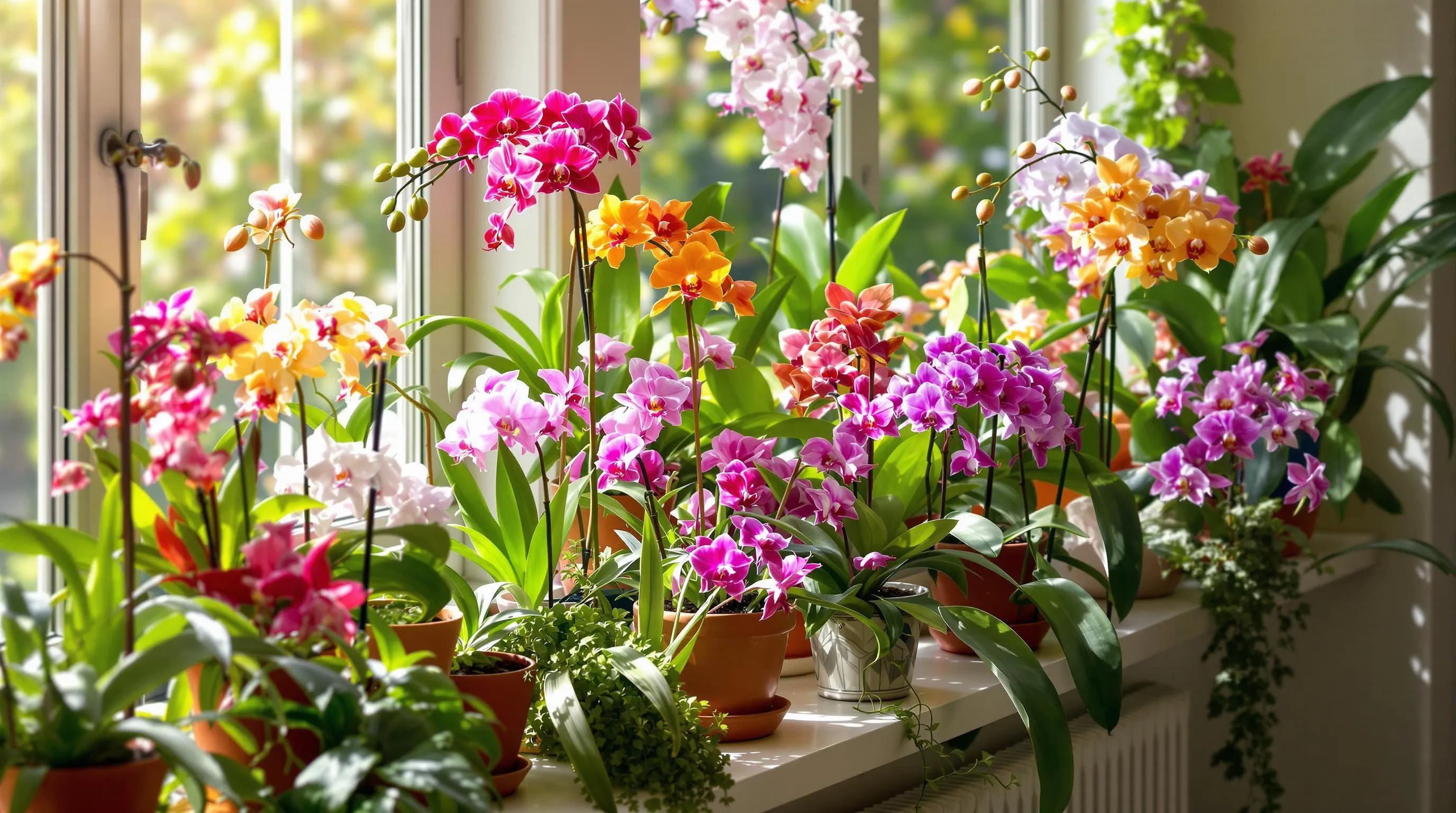
Growing exotic orchids indoors successfully requires understanding their fundamental needs. While these tropical beauties have a reputation for being demanding, they’ll thrive with the right care approach.
Creating the Ideal Environment
Light requirements vary among orchid species, but most exotic varieties need bright, indirect light. Place your orchids near east or west-facing windows for optimal growth. Temperature stability is crucial—most indoor orchids prefer daytime temperatures between 65-75°F (18-24°C) and nighttime temperatures about 10 degrees cooler. Humidity levels should be maintained between 40-70%, which can be achieved by using humidity trays, grouping plants together, or running a humidifier. Air circulation is equally important—gentle airflow prevents fungal issues while strengthening stems. Create a microclimate that mimics your orchid’s natural habitat by researching your exact variety’s origin. For example, Phalaenopsis orchids prefer warmer, more humid conditions than Cymbidiums, which enjoy cooler temperatures.
Essential Tools and Supplies
Equip yourself with specialized orchid tools to ensure successful growing. Start with orchid-exact potting media like bark mix, coconut chips, or sphagnum moss rather than regular potting soil. Clear plastic pots allow you to monitor root health while providing necessary drainage and airflow. Invest in pruning shears with thin blades for precise cutting without damaging delicate tissues. A moisture meter helps prevent the common mistake of overwatering by accurately measuring moisture levels in the growing medium. Fertilizers formulated specifically for orchids (typically higher in nitrogen and phosphorus) should be applied at quarter-strength during the growing season. A spray bottle with filtered water makes humidity management simple, while orchid stakes and clips support tall flower spikes without damaging them.
Phalaenopsis: The Elegant Moth Orchid for Beginners
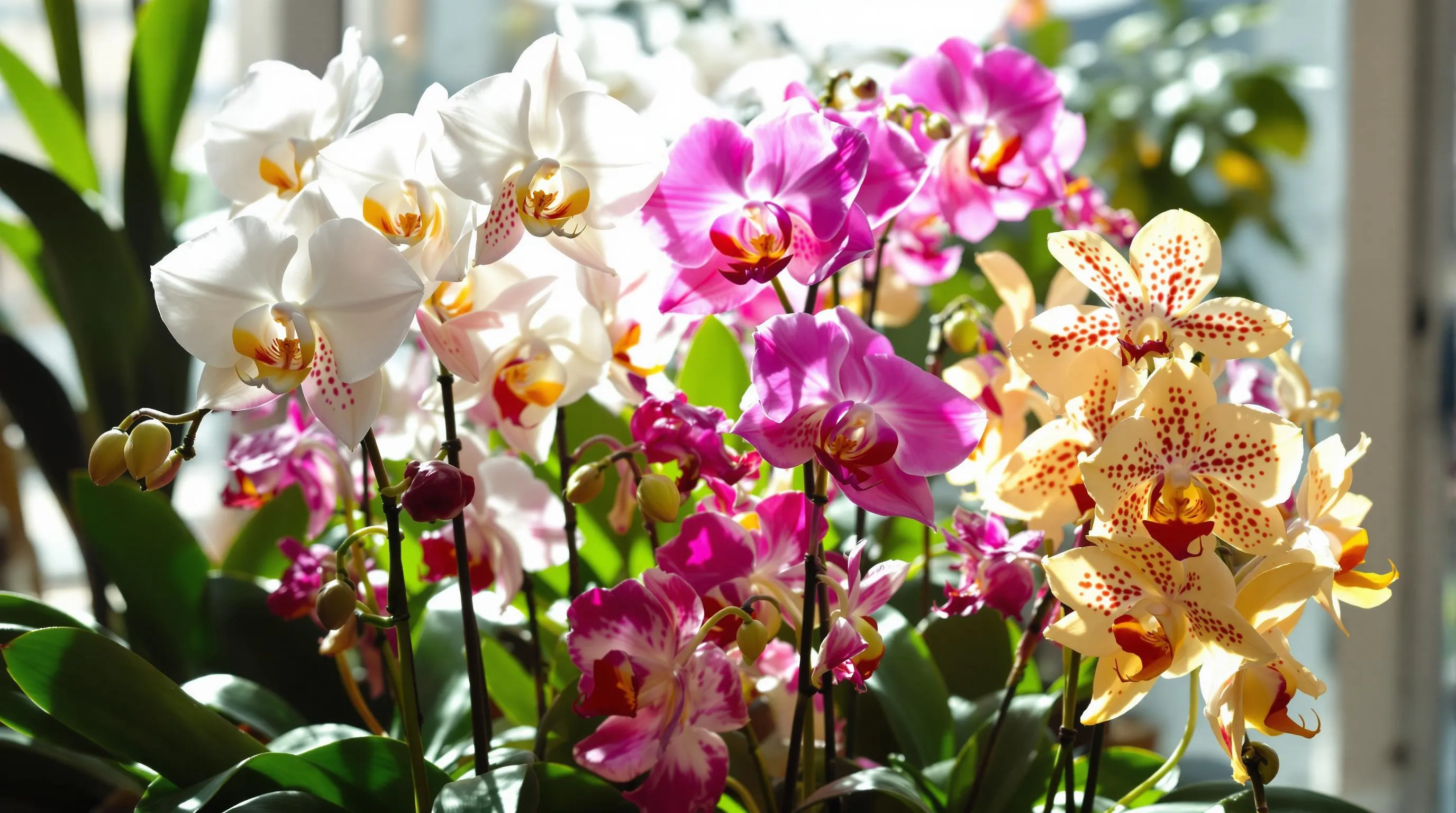
Phalaenopsis orchids, commonly known as Moth Orchids, are the perfect gateway into exotic orchid cultivation for beginners. These stunning plants feature elegant, arching sprays of blooms that can last for months, making them both rewarding and relatively forgiving for novice growers.
Popular Phalaenopsis Varieties
The Phalaenopsis amabilis (White Moth Orchid) showcases pristine white flowers with yellow centers that bring a touch of sophistication to any indoor space. For color enthusiasts, the Phalaenopsis schilleriana offers striking pink blooms with silver-mottled foliage that serves as a decorative element even when not flowering. The Phalaenopsis equestris is perfect for smaller spaces, featuring miniature growth habits with charming pink to purple flowers. If you’re looking for something truly unique, try the Phalaenopsis hieroglyphica with its fascinating cream-colored blooms adorned with reddish-brown hieroglyphic-like patterns. Hybridized varieties like the Phalaenopsis ‘Baldan’s Kaleidoscope’ offer spectacular multi-colored flowers with speckles and stripes that create a vibrant display in your home.
Care Requirements
Phalaenopsis orchids thrive in bright, indirect light, making them ideal for east or west-facing windows. Water these beauties only when the potting medium feels dry to the touch, typically every 7-10 days. Maintain temperatures between 65-80°F (18-27°C) during the day and no lower than 60°F (15°C) at night for optimal growth. They prefer humidity levels of 50-70%, which you can achieve by placing the pot on a humidity tray filled with pebbles and water. Fertilize lightly every other watering with a balanced orchid fertilizer at quarter strength. Repot your Phalaenopsis every 1-2 years using a specialized orchid mix that provides excellent drainage while retaining some moisture. With these simple care practices, your Moth Orchid will reward you with multiple blooming cycles throughout the year.
Dendrobium: Vibrant Cane Orchids That Thrive Indoors
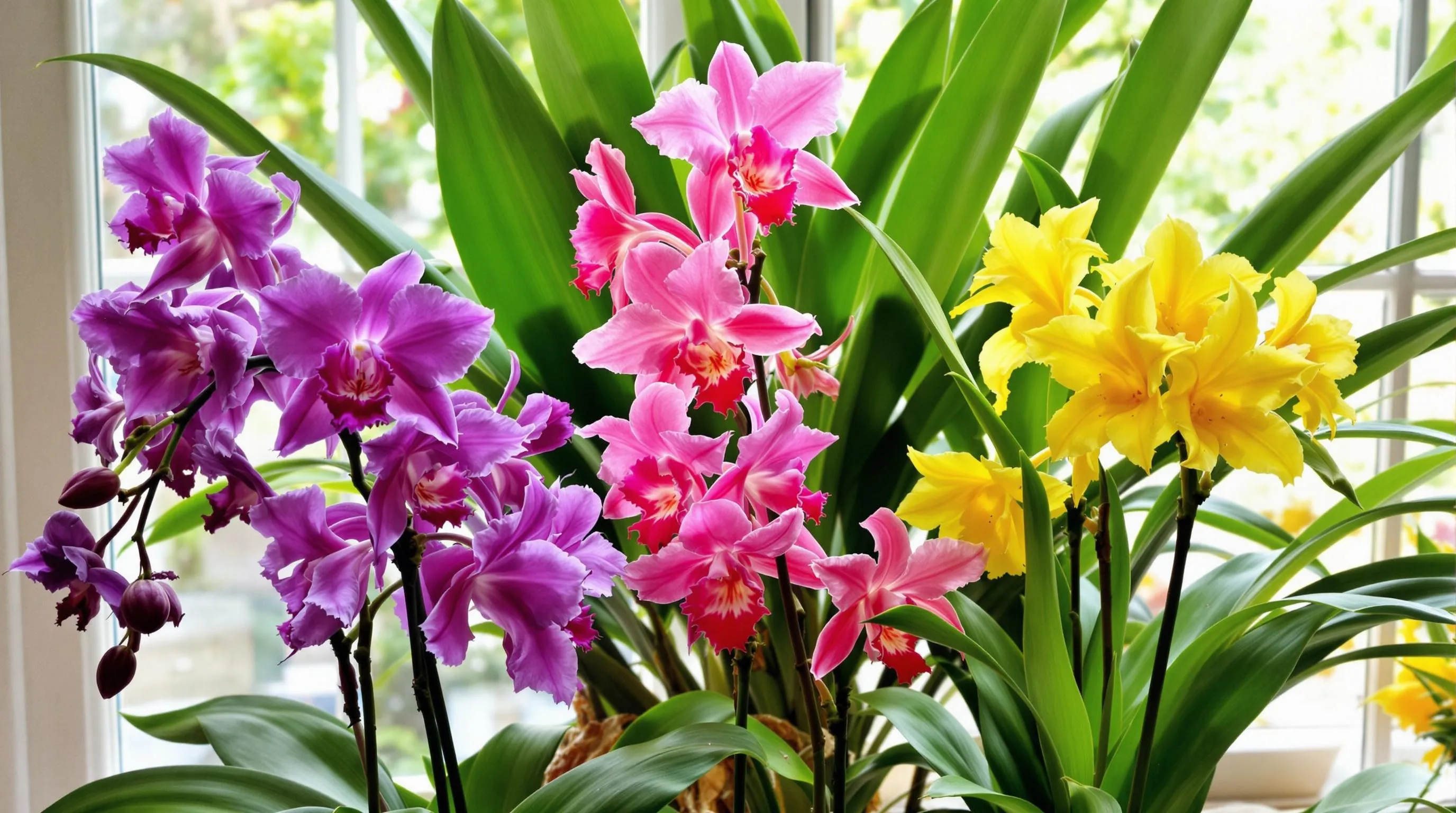
Dendrobium orchids captivate indoor plant enthusiasts with their striking cane-like stems and vibrant blooms that can transform any living space. These resilient beauties originate from Asia and Australia, offering remarkable diversity in size, color, and growth habits that make them perfect additions to your indoor orchid collection.
Spectacular Dendrobium Varieties
Dendrobium nobile showcases clusters of fragrant, waxy flowers in purple, pink, white, or yellow along its leafless canes. Dendrobium phalaenopsis (also called Dendrobium bigibbum) produces arching sprays of purple, white, or pink flowers that resemble moths in flight. The miniature Dendrobium kingianum offers pink to purple blooms with delightful fragrance, perfect for limited spaces. Dendrobium loddigesii charms with its compact size and delicate pink flowers featuring intricate lip patterns. For dramatic impact, try Dendrobium spectabile with its twisted, spider-like blooms featuring unusual green and purple coloration. The Dendrobium aggregatum (now lindleyi) dazzles with golden-yellow flowers that appear in dense clusters, creating a waterfall effect when in full bloom.
Dendrobium Growing Tips
Position your Dendrobium orchids in bright, indirect light near an east or west-facing window for optimal growth. Water thoroughly when the growing medium feels dry to the touch, typically every 7-10 days during active growth and less frequently during dormancy. Maintain temperatures between 65-85°F (18-29°C) during the day and allow a 10-15°F drop at night to encourage blooming. Provide 50-60% humidity using a humidity tray or room humidifier, as these orchids enjoy moisture-rich air. Feed with a balanced orchid fertilizer at quarter-strength every other watering during the growing season, then reduce or eliminate feeding during winter rest periods. Repot every 2-3 years using a well-draining orchid mix with bark, charcoal, and perlite components. For deciduous varieties like Dendrobium nobile, carry out a winter rest period with cooler temperatures and reduced watering to trigger spectacular spring flowering.
Paphiopedilum: Unique Lady Slipper Orchids for Your Collection
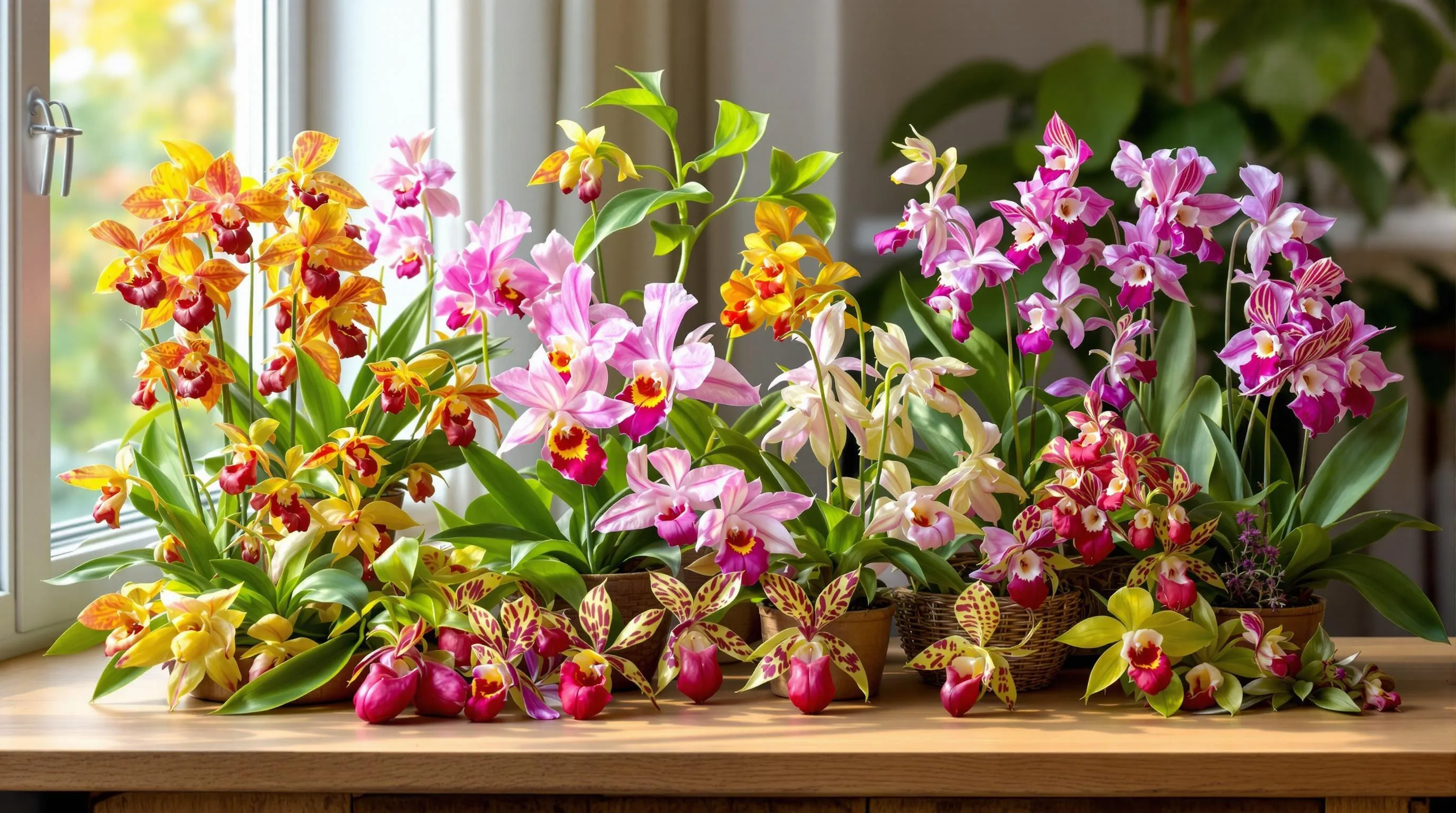
Paphiopedilum orchids, commonly known as Lady Slippers, stand out in any collection with their distinctive pouch-shaped blooms and intriguing patterns. These terrestrial orchids make excellent houseplants due to their ability to thrive in lower light conditions than many other orchid varieties.
Exotic Paphiopedilum Varieties
Paphiopedilum maudiae hybrids feature striking striped or mottled foliage with elegant green and white flowers, making them perfect for beginners. The Paphiopedilum bellatulum dazzles with its round, spotted blooms that resemble delicate porcelain. For dramatic flair, try Paphiopedilum rothschildianum (King of Paphs) with its bold stripes and impressive stature. The miniature Paphiopedilum armeniacum showcases vibrant yellow pouches that brighten any indoor space. Paphiopedilum micranthum offers subtle pink pouches with intricate veining, perfect for collectors seeking understated elegance. The multifloral Paphiopedilum philippinense produces arching stems with multiple blooms featuring twisted petals and distinctive pouches, creating a cascading display that serves as a living sculpture.
Special Care Considerations
Lady Slipper orchids require different care than other orchid types, thriving in medium to low light conditions—east or north-facing windows are ideal. Water your Paphiopedilum when the growing medium feels just slightly dry to the touch, typically once every 7-10 days. These orchids prefer temperatures between 60-85°F (15-29°C) with moderate humidity around 40-60%. Use a specialized terrestrial orchid mix containing fine bark, perlite, and sphagnum moss for optimal growth. Fertilize weakly (¼ strength) every other watering with a balanced orchid fertilizer, avoiding fertilization during winter months. Repot your Paphiopedilum every 1-2 years, preferably after flowering, as these orchids dislike being rootbound. Remember that Paphs rarely go dormant, requiring year-round attention to moisture levels and consistent care to encourage their unique blooms.
Oncidium: Dancing Lady Orchids With Dramatic Blooms
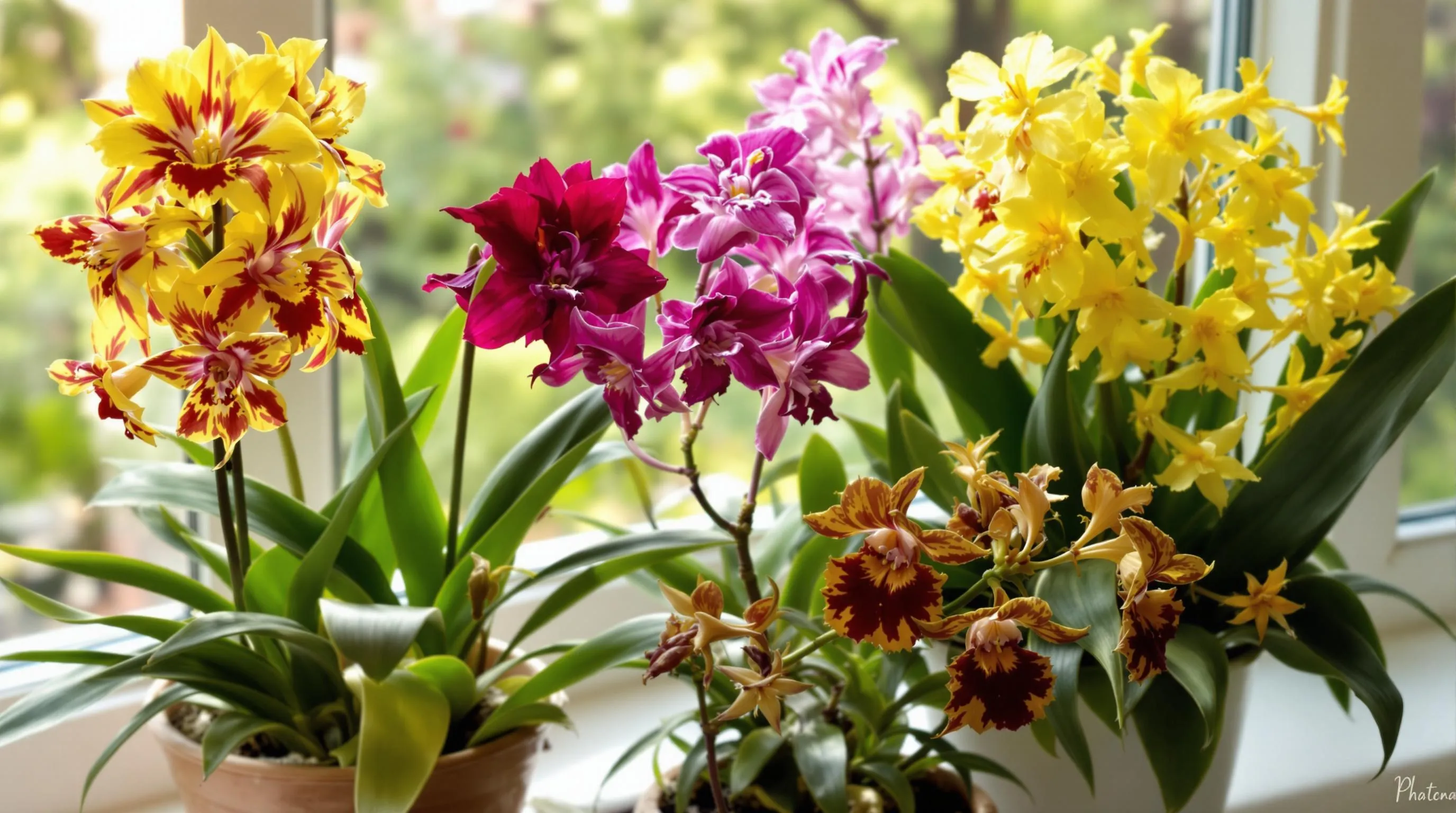
Oncidium orchids, commonly known as Dancing Lady orchids, captivate indoor gardeners with their spectacular sprays of flowers that resemble tiny dancing figures. These showstoppers bring movement and energy to any indoor space with their branching flower spikes and abundant blooms.
Stunning Oncidium Varieties
The Oncidium Sweet Sugar ‘Million Dollar’ stands out with its candy-scented yellow and red flowers that bloom profusely on compact plants, making it perfect for windowsills. Oncidium Sharry Baby ‘Sweet Fragrance’ produces multiple branching spikes covered in small reddish-brown flowers with white lips and emits a rich chocolate-vanilla fragrance that fills entire rooms. For those seeking unusual colors, Oncidium Twinkle offers miniature star-shaped flowers in shades of white, yellow, and pink with a delightful sweet scent. The Oncidium Tiger Crow ‘Golden Girl’ features dramatic tiger-striped patterns in gold and mahogany, creating a striking display on arching flower spikes. Wildcat varieties offer incredible diversity with their spotted patterns and intense colors ranging from deep burgundy to vibrant yellow, thriving in standard home conditions.
Light and Water Requirements
Oncidium orchids thrive in bright, indirect light—an east or west-facing window provides ideal conditions without the risk of sunburn. Water these orchids when their potting medium feels nearly dry to the touch, typically every 7-10 days depending on your home environment. Unlike some orchids, Oncidiums have thin pseudobulbs that store less water, making them less tolerant of drought conditions. During growth periods, keep humidity between 50-60% using a humidity tray or small humidifier placed nearby. Feed your Dancing Lady orchids with a balanced orchid fertilizer at quarter-strength every other watering during active growth, reducing to monthly applications during winter dormancy. These adaptable plants prefer temperatures between 65-75°F during the day and around 55-60°F at night, with this temperature differential helping to trigger blooming cycles.
Cattleya: Classic Corsage Orchids With Intoxicating Fragrance
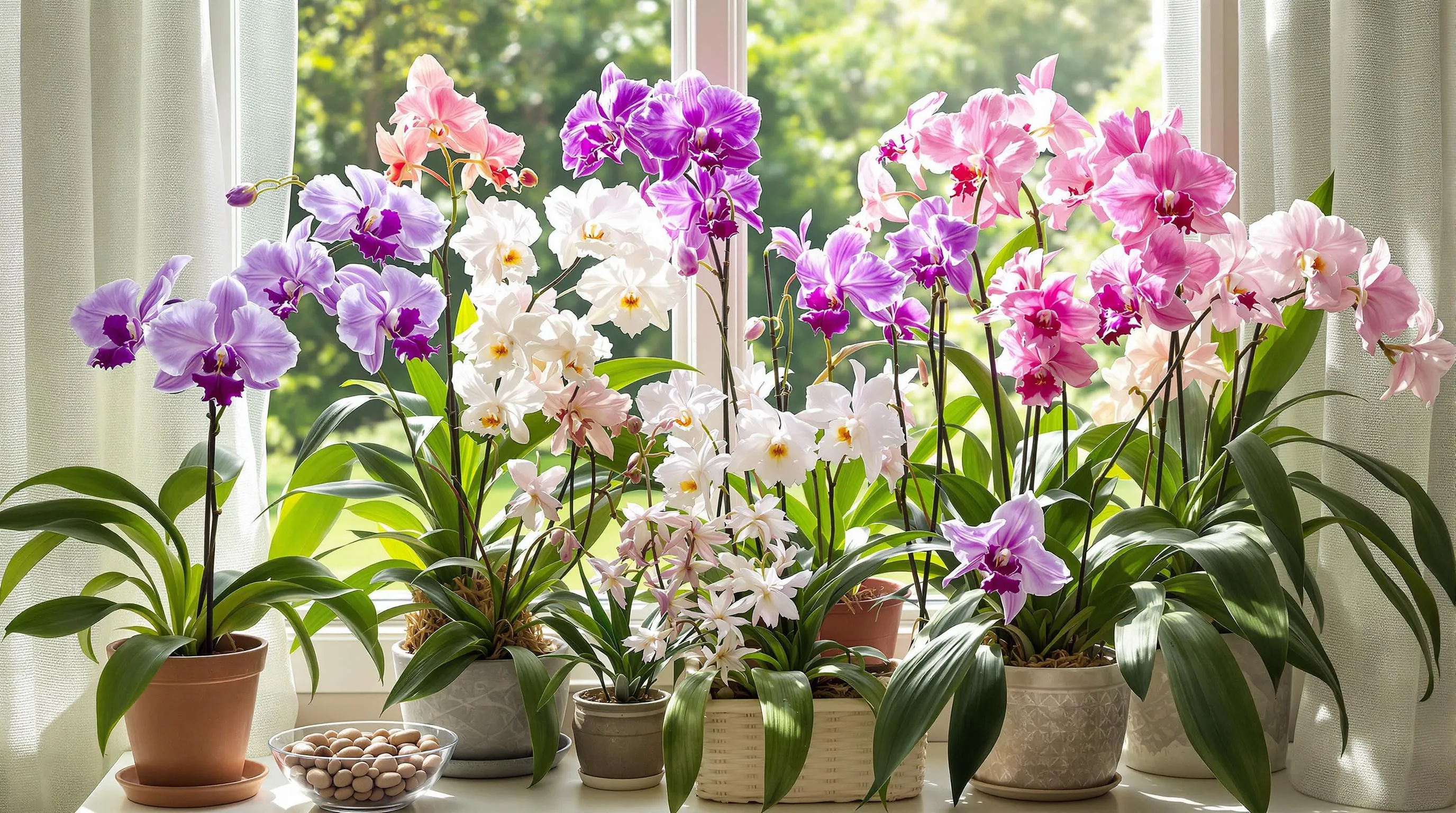
Cattleya orchids are often called the “Queen of Orchids” for their spectacular blooms and intoxicating fragrance that can fill an entire room. These classic beauties were once the standard for corsages and remain one of the most sought-after orchids for indoor growing. Their large, ruffled flowers come in a stunning array of colors and patterns, making them a dramatic focal point in any indoor garden collection.
Show-Stopping Cattleya Varieties
Cattleya labiata is the quintessential corsage orchid with 6-8 inch blooms in shades of lavender to purple with striking lip markings. This variety blooms once yearly in fall, producing 2-3 flowers per stem that last up to three weeks. Cattleya trianaei, known as the “Christmas Orchid,” displays white to pink petals with a contrasting magenta lip, perfect for holiday displays. For compact spaces, try Cattleya walkeriana, a miniature variety reaching only 6 inches tall but producing proportionally large, intensely fragrant purple flowers. Cattleya percivaliana offers deep lavender blooms with striking yellow throats and crimson-purple lips, while hybrid Cattleya ‘Hawaiian Wedding Song’ charms with pristine white flowers featuring delicate pink lips—ideal for windowsill growing with its more manageable size.
Humidity and Temperature Needs
Cattleyas thrive in bright, filtered light and moderate to high humidity between 50-70%. Place your orchid near an east or west-facing window, using sheer curtains to diffuse direct sunlight that could burn the leaves. These orchids prefer temperatures between 70-85°F during the day and 55-65°F at night, with this 10-15°F temperature drop being crucial for initiating blooming. During winter months, keep plants away from cold drafts while maintaining adequate air circulation. You can increase humidity by placing the pot on a humidity tray filled with pebbles and water or grouping plants together. Unlike more delicate orchid varieties, Cattleyas can tolerate average home humidity levels when properly watered, making them surprisingly adaptable to indoor conditions.
Vanda: Spectacular Hanging Orchids for Bright Spaces
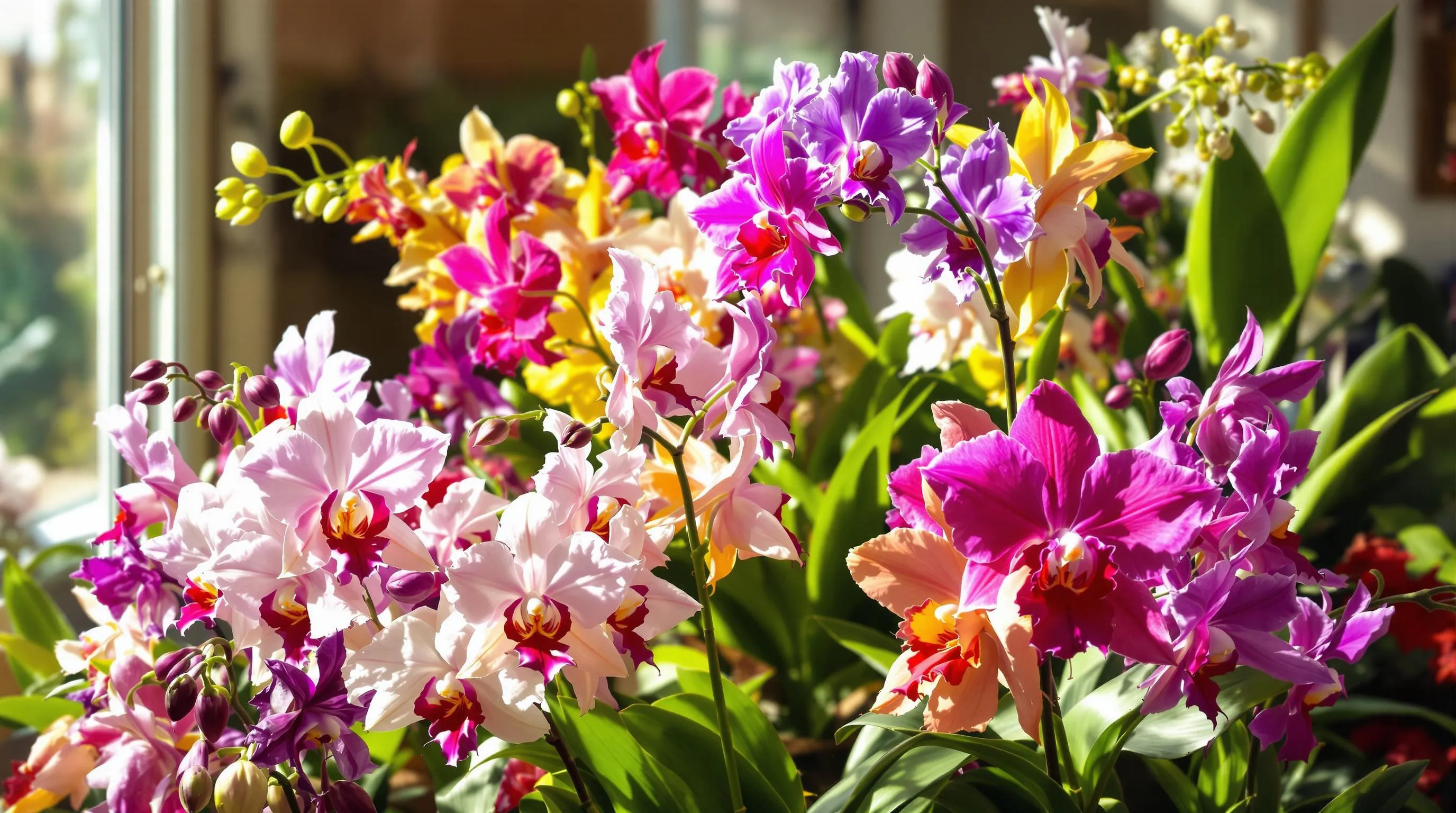
Vanda orchids stand out in the exotic orchid industry for their vibrant colors, impressive size, and aerial root systems. These magnificent plants naturally grow without soil in tropical forests, making them perfect candidates for hanging displays in bright indoor spaces.
Breathtaking Vanda Varieties
Vanda coerulea (Blue Orchid) captivates with its rare true-blue flowers that measure up to 4 inches across, creating a stunning visual display when in full bloom. Vanda sanderiana, also known as Waling-Waling, features large rounded blooms with pink to purple petals and a netted pattern that has earned it the title “Queen of Philippine Flowers.” For smaller spaces, try Vanda Mini varieties like ‘Tiny Tim’ or ‘Little Red,’ which reach only 12 inches in height while still producing the characteristic vibrant blooms in purple, blue, and red shades. Vanda Rothschildiana hybrids offer exceptionally fragrant flowers with distinctive spotted patterns in colors ranging from deep burgundy to bright orange. If you’re looking for unusual coloration, Vanda tessellata displays fascinating checkered patterns on its petals and produces a sweet vanilla-like scent during morning hours.
Special Growing Techniques
Unlike most orchids, Vandas require specialized growing methods to thrive indoors. Mount these rootless wonders in wooden baskets filled with large bark chunks or grow them in clear plastic pots that allow their aerial roots to receive light. Position your Vanda in your brightest window with 6-8 hours of filtered sunlight daily—east or south-facing windows typically work best. Water thoroughly by submerging the entire root system for 15 minutes every 1-2 days, ensuring roots turn green after watering. Maintain humidity levels above 60% using humidity trays or regular misting, particularly important during winter months when indoor heating reduces moisture. Feed weekly with a balanced orchid fertilizer at quarter strength during growing season (spring through fall) to support their high energy requirements. For successful blooming, provide a 10-15°F temperature drop at night, mimicking their natural tropical environment where temperatures fluctuate between day and night.
Miniature Orchid Varieties for Limited Spaces
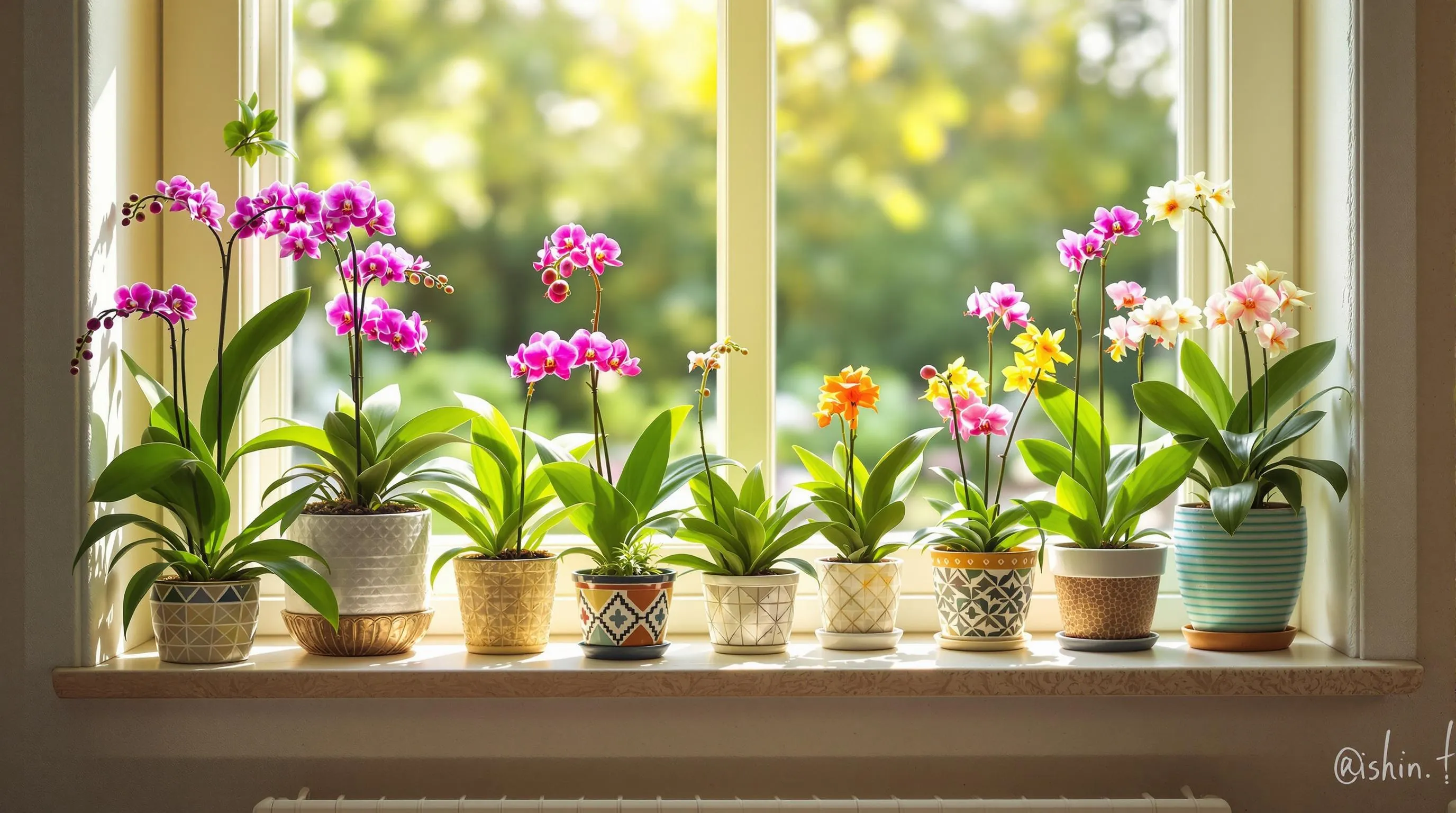
Don’t let limited space prevent you from enjoying exotic orchids. Miniature varieties pack all the beauty of their larger cousins into compact forms perfect for windowsills, small shelves, and terrariums.
Compact Jewel Orchids
Jewel orchids in miniature form offer stunning foliage in small packages. Macodes petola ‘Mini’ displays intricate golden veining on deep green leaves that rarely exceeds 4 inches in height. Ludisia discolor ‘Little Stars’ features velvety burgundy leaves with silvery pink stripes, growing to just 3 inches tall. These compact jewels thrive in terrariums or small decorative containers where their dramatic foliage becomes the focal point. Unlike their larger counterparts, these miniatures prefer lower light conditions, making them perfect for north-facing windows or areas deeper within your home where other orchids might struggle.
Tiny Treasures Under 6 Inches
The orchid industry offers remarkable varieties that stay under 6 inches in height while delivering spectacular blooms. Platystele stenostachya, often called the “Threadlike Platystele,” produces tiny star-shaped flowers on 2-inch plants. Pleurothallis grobyi charms with translucent yellow-green flowers on 3-inch plants, while Masdevallia mendozae offers vibrant orange blooms on 4-inch foliage. These miniatures thrive mounted on small pieces of cork bark or in 2-inch pots, requiring minimal space on a bright windowsill. Their small root systems need frequent but light watering, typically twice weekly, and they appreciate higher humidity of 60-70%. For spectacular results, group several varieties together to create a miniature orchid garden that fits on a dinner plate.
Rare Exotic Orchids for Advanced Growers
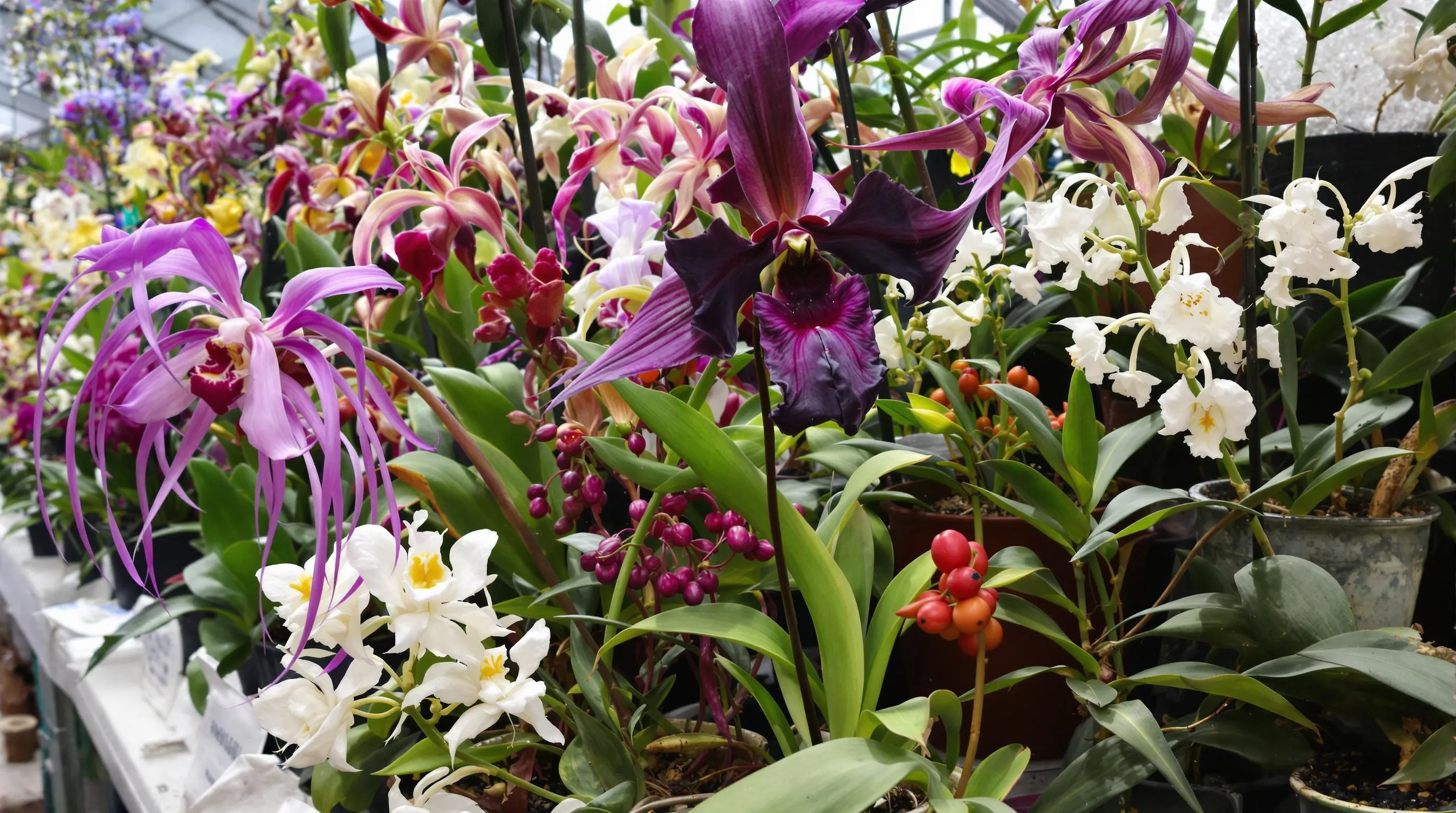
For experienced orchid enthusiasts ready to take their collection to the next level, rare exotic orchids offer a rewarding challenge. These uncommon varieties demand more precise care but reward your efforts with blooms of extraordinary beauty and uniqueness.
Unusual Species Worth the Challenge
Paphiopedilum sanderianum stands out with its remarkable ribbon-like petals that can grow up to 3 feet long. This rare Malaysian orchid requires consistent humidity and careful watering to thrive. Dracula vampira, aptly named for its bat-like appearance, produces fascinating black-purple flowers that resemble a monkey’s face. It demands cool temperatures between 50-75°F and constant high humidity to bloom successfully. The Ghost Orchid (Dendrophylax lindenii) grows without leaves, displaying only green roots and ethereal white blooms that appear to float in air. This endangered species requires specialized mounting techniques and precise environmental control. Rothschild’s Slipper Orchid (Paphiopedilum rothschildianum) features striking striped petals and commands prices up to $5,000 for a single plant due to its rarity. The Blue Vanda (Vanda coerulea) produces true blue flowers—a rarity in the orchid industry—and requires bright light and excellent air circulation to maintain its vibrant color.
Where to Find Rare Varieties
Specialized orchid nurseries like Seattle Orchid, Orchid Inn, and Norman’s Orchids offer carefully cultivated rare specimens with proper documentation. International orchid shows such as the Industry Orchid Conference and Tokyo Dome Orchid Show provide opportunities to purchase directly from expert growers worldwide. Online auction sites including eBay and specialized forums like OrchidBoard feature listings from collectors looking to sell or trade unusual varieties. Join orchid societies to connect with experienced collectors who often divide and share rare plants within their community. When purchasing rare orchids, always verify they’re legally propagated with proper CITES documentation to ensure you’re not contributing to the depletion of wild populations. Prices for these unusual specimens typically range from $100 to several thousand dollars depending on rarity, size, and maturity.
Common Problems and Troubleshooting Your Indoor Exotic Orchids
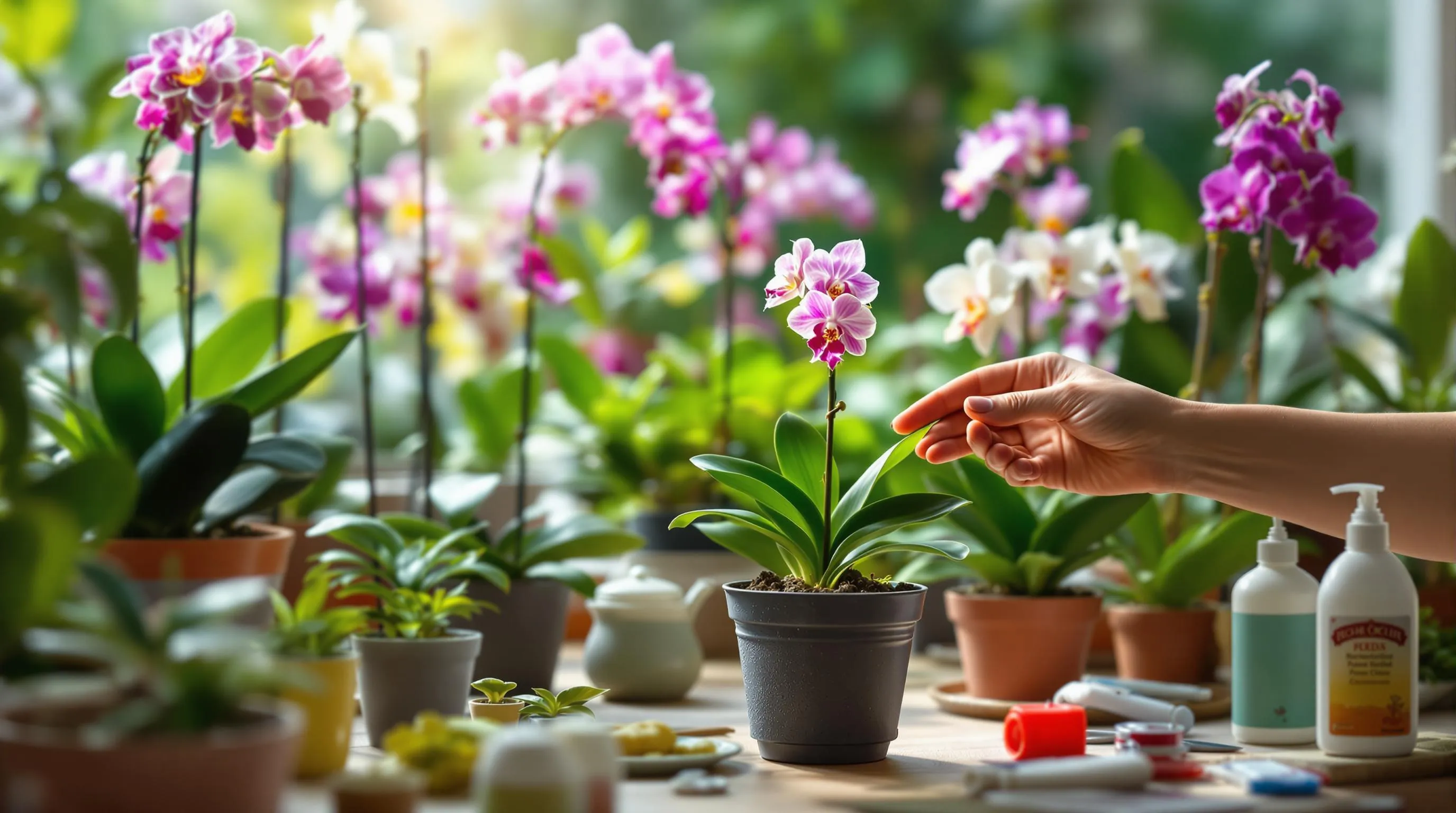
Even the most dedicated orchid enthusiasts encounter challenges with their exotic beauties. Knowing how to identify and address common problems will help keep your indoor orchid collection thriving year-round.
Pest Management
Orchid pests can quickly damage your prized plants if left unchecked. Spider mites appear as tiny red or brown specks and cause yellowing leaves with fine webbing in severe cases. Scale insects look like small brown bumps on stems and leaves, while mealybugs create cotton-like masses in leaf joints. Aphids cluster on new growth and flower buds, causing distortion. To control these pests, isolate affected plants immediately and treat with insecticidal soap or neem oil, carefully following package directions. Wipe leaves regularly with a damp cloth to both clean and inspect for early signs of infestation. For persistent problems, systemic insecticides formulated specifically for orchids offer longer-term protection without harming delicate blooms. Always quarantine new orchids for 2-3 weeks before introducing them to your collection to prevent pest spread.
Disease Prevention and Treatment
Fungal and bacterial issues frequently affect indoor orchids, particularly when air circulation is poor or plants are overwatered. Black rot causes dark, spreading lesions on leaves and can kill plants within days if not addressed. Root rot appears as brown, mushy roots with an unpleasant smell. Bacterial brown spot creates water-soaked patches that turn dark and expand rapidly. To prevent these problems, always use sterile cutting tools, avoid overhead watering, and ensure proper air movement around your orchids. For active infections, remove affected tissue with sterilized scissors, cutting into healthy plant material by at least 1/4 inch beyond the diseased area. Apply cinnamon powder or fungicide to cut surfaces. Severely infected plants may need repotting in fresh media after removing all compromised roots. Adjust your watering schedule immediately when you notice disease symptoms, as most orchid diseases thrive in overly moist conditions. For prized specimens showing early disease signs, commercial fungicides containing copper or chlorothalonil can be effective when applied according to product instructions.
Conclusion: Creating Your Indoor Exotic Orchid Paradise
Bringing exotic orchids into your home transforms ordinary spaces into personal tropical retreats. From beginner-friendly Phalaenopsis to striking Vandas and rare collector’s specimens these living jewels offer endless variety for every indoor gardener.
With the right light conditions specialized potting media and attention to each variety’s unique needs you’ll soon discover that growing exotic orchids indoors isn’t just possible—it’s deeply rewarding. Their extraordinary blooms and distinctive growth habits make them unlike any other houseplant.
Start your collection with one or two varieties that match your home environment then expand as your confidence grows. The industry of exotic orchids awaits with its breathtaking diversity ready to bring years of flowering joy to your indoor garden.





